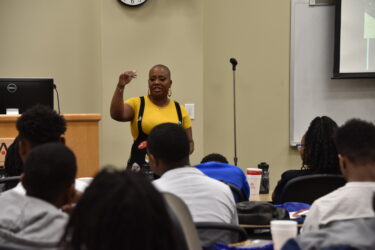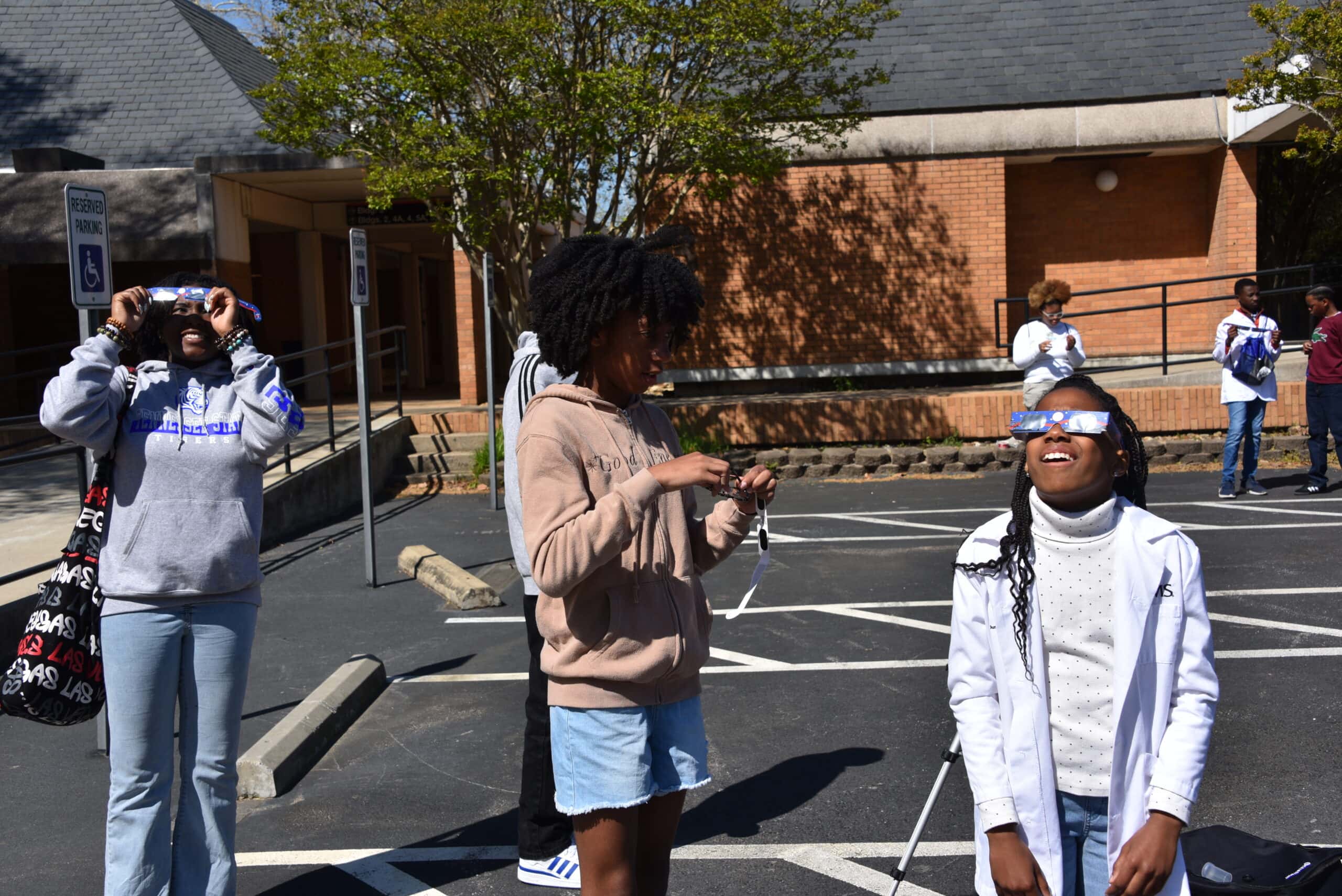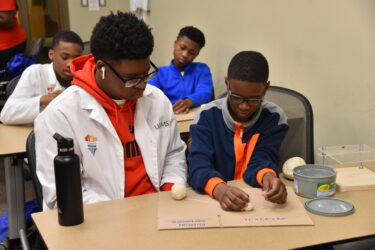Pathways Academy Students Learn About Eclipse, Get Advice from NASA Scientist
| An April 6 event at the University of Arkansas for Medical Sciences (UAMS) gave youths an opportunity to learn about the total solar eclipse and receive career advice from a NASA scientist.
About 50 students in grades 6-12 came to the UAMS campus on a sunny Saturday morning for the event hosted by Pathways Academy, an educational and community engagement program in the UAMS Division for Academic Pathways and Workforce Partnerships. Pathways Academy prepares K-12 students for careers in science, technology, engineering, mathematics and health sciences (STEM-H) disciplines.

K. Renee Horton, a physicist and space launch system quality engineer for NASA, talks to students about her career path and encourages them to find their own.
K. Renee Horton, Ph.D., a physicist and space launch system quality engineer in the Residential Management Office of NASA’s Michoud Assembly Facility in New Orleans, opened the event with a speech that traced her career path and encouraged students to find their own.
“I want you all to understand that STEM can take you anywhere,” she said.
Horton described how childhood experiences in her grandparents’ backyards fostered her love for nature and scientific discovery. When she turned 9 years old, her father gave her a telescope, and she took it to the roof of their house so she could see the stars.
“I knew right then that I was going to be a part of a universe that was so much bigger than me,” she said.
After graduating with a bachelor’s degree in electrical engineering from Louisiana State University in 2002, Horton aspired to join the armed services as a pilot and eventually become an astronaut. However, a hearing-impairment diagnosis led the Air Force to reject her. Seven years passed before Horton, then a single mother of three children, decided to return to college and resume her dream of changing the world.
“Everybody was saying I couldn’t do it, but nobody was telling me why it couldn’t be done,” she said.
Horton enrolled at the University of Alabama, graduating in 2011 with a doctorate in material science with a concentration in physics. She also began her work with NASA, first as a student and then as a full-time mechanical test engineer.
Horton spent 12 years as an expert in rocket welding for the Artemis program, a NASA project that intends to once again send American astronauts to the moon. While looking back on her journey, she urged the students to define their career priorities and build a network of supportive friends and colleagues.
“Every time I’ve taken a big step, my friends and my network have been there to keep pushing me,” she said.
After Horton’s speech, the students divided into groups for a series of hands-on activities that raised their excitement about the solar eclipse. They built clay models of the eclipse, and they explored the stars inside an inflatable planetarium set up in the lobby of the Administration West Building. In a parking lot outside the building, they gathered around eclipse telescopes and learned how to safely view the sun.
Tony Hayar, an eighth grader at Forest Heights STEM Academy in Little Rock, said the planetarium was a highlight of the event.
“The planetarium was fun because it had a voiceover that talked about how many galaxies there are and how far they’re spaced apart,” he said. “It was like a documentary.”
Sherman Nash, a junior at Hall STEAM Magnet High School in Little Rock, said he was also fascinated by the vastness of space.
“Overall, this was a really fun learning experience,” he said.
At another station, a lesson in building microscopes showed how scientists can study the skin cells of a person’s hand — or potentially search for signs of life on other worlds.
“I enjoy events like this, where you get to experience a lot of new things,” said Olivia Pettus, a sixth grader at Bryant Middle School who was particularly interested in the microscope activity.
The event was organized by Pathways Academy in partnership with the Arkansas Space Grant Consortium and the Little Rock and central Arkansas chapters of the Delta Sigma Theta sorority organization.
“I’m super happy that through intentional collaboration, we were able to offer a once-in-a-lifetime learning opportunity for our scholars and others in central Arkansas,” said Katina White, the education and curriculum coordinator for Pathways Academy.

